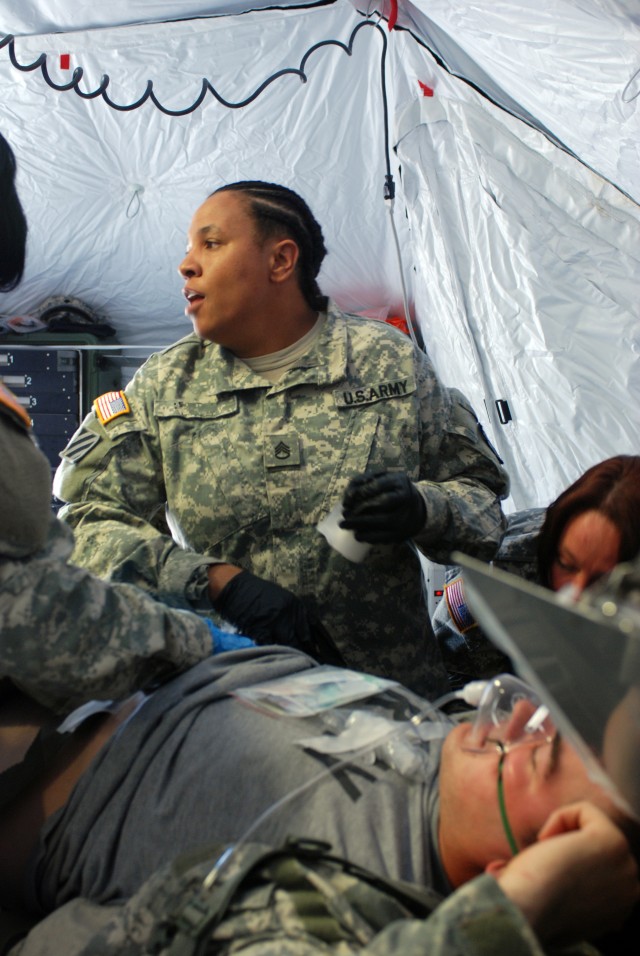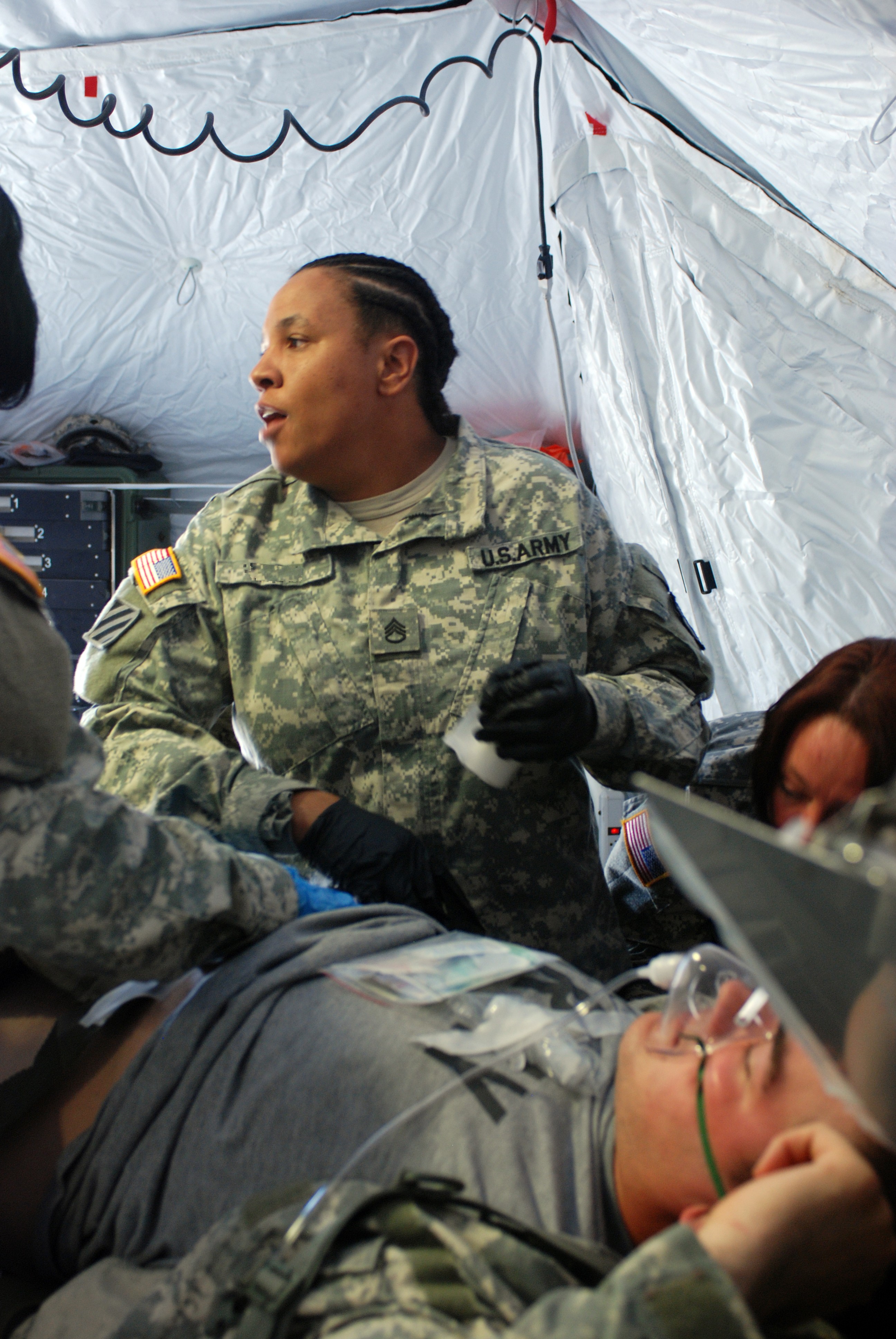FORT SILL, Okla. - When it comes down to brass tacks, every Soldier who graduates from basic combat training is qualified as an entry-level infantryman, enabling Soldiers to protect themselves from the dangers inherent to the battlefield. Yet, there are Soldiers much more likely to protect their comrades than themselves. It is what some joined the Army to do.
During the 214th Fires Brigade's two week field training exercise, the brigade medical team and supporting staff conducted a drill on April 11 to test its capacity to respond to large numbers of casualties in a deployed environment. The training, said Maj. Paul Warmuskerken, executive officer of the 214th Fires Brigade, was something of which to be proud.
"Once they got inside the treatment tent, everybody had a task," he said. "They clearly are professional Soldiers and understand their job. They had a drill, and they executed to standard."
The battlefield standard for military medical personnel is set by the training they receive throughout their career. For deploying units, that training is tested at the Joint Ranges Training Center at Fort Polk, La. Though not a Soldier in the medical field, Spc. Matthew T. Darois has seen those exercises first hand. During his time at Fort Polk, Darois was a member of the training crew assigned to deploying units.
"I can only speak for myself, but I know they did a great job with me," he said.
Others involved with the mass casualty exercise agree.
"It was a great gauge as to where we stand as a [medical] section," said Pfc. Jody Galinat, a medic with Headquarters, Headquarters Battery, 214th FB.
As a learning experience, many of the Soldiers involved believe they gained much from the drill.
"Any time you do training you try to identify things you can improve on and make it better for next time, and we definitely did that," said Capt. Steven Arnold, the brigade physician assistant and one of the individuals who helped organize the event.
Of those improvements, the exercise allowed his medics to reacquaint themselves with some of the basic medical skills they don't get to use on a daily basis, he said.
"Traditionally, when out in the field we do a lot of talk through [scenarios]. Here, I would give an IV. Here I would do this. In our scenario today, we actually did that stuff. I want them to understand how long it takes to initiate an IV, give medicines, put on a tourniquet, that sort of stuff," said Arnold.
"If you don't use it, you lose it" he added.
One of the aspects of the event needing improvement is the particiation of non-medical personnel, said Galinat, who believes much of the capacity to treat large numbers of patients relies on the efficient assistance of those Soldiers.
"They have a huge ability to make an impact," he said. "It puts them all in the ball game and it makes them see the bigger picture."
As the field training exercise concludes, the medical staff hopes the lessons learned will help them prepare for the next time they are called into action.
"What I hope they get out of this is to always prepare for the worst. You can never be too prepared when it comes to medicine," said Arnold. "What everyone needs to know is that it may be you out there missing a limb or extremity, or maybe your buddy, or brother. It needs to be taken seriously."


Social Sharing